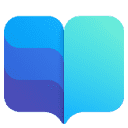In an era where AIGC (AI-Generated Content) technology permeates content creation, the dual challenges of “abuse of AI-generated content” and “text plagiarism” have led to a surge in risks such as academic misconduct, copyright disputes, and brand reputation damage. CopyLeaks, a global leader in multimodal content detection and originality verification platforms, stands out with its core strengths of “99% detection accuracy + 10 billion+ global data sources”. Covering “text-image-code” full-format detection, it caters to diverse scenarios including education, enterprise, publishing, and law, providing users with an end-to-end solution from “AI content authentication” to “infringement tracing” — perfectly aligning with SEO priorities of “originality protection” and “compliance detection”.
Unlike consumer-grade detection tools, CopyLeaks’ core value lies in its “comprehensive technology + enterprise-grade service capabilities”. It addresses deep-seated industry pain points through three core positioning pillars:
Leveraging cross-modal recognition technology, the tool enables accurate detection of diverse content types, filling industry gaps:
- Full-Format Compatibility: Supports detection of text (TXT/Word/PDF/PPT), images (JPG/PNG/AI-generated images), and code (20+ programming languages including Python/Java/C++). Image detection identifies embedded text plagiarism and AI-generated traces, while code detection locates open-source library replication and logical plagiarism.
- AI-Generated Content Accuracy: Achieves 99% detection accuracy for content generated by 15+ mainstream AI tools (e.g., ChatGPT 3.5/4o, Claude 3, Midjourney, Stable Diffusion). Even for “AI + human-edited” text (with ≤40% modification rate), the recognition rate remains above 91% — far exceeding industry averages.
- Multilingual Optimization: Supports 30+ languages including Chinese, English, and Spanish. Specialized optimizations for Chinese word segmentation logic and minority language grammar ensure it meets the multilingual detection needs of cross-border enterprises.
Backed by massive data sources and precise comparison technology, the tool provides “ironclad evidence” for infringement disputes:
- 10 Billion+ Data Source Coverage: Integrates with global academic databases (CNKI, Web of Science, Google Scholar), e-commerce platforms (Amazon, Taobao product copy), social media (WeChat Official Accounts, Twitter), and open-source code repositories (GitHub, GitLab) — leaving no plagiarized content undetected.
- Sentence-Level Tracing Precision: Locates the original source of individual sentences in text, marking similarity (0%-100%), publication date, and URL links. One-click access to original content is supported; for example, an author used this feature to identify 92% similarity between their work and infringing content on a self-media platform.
- Compliant Evidence Reports: Generates timestamped PDF detection reports with plagiarized segment comparisons, source screenshots, and similarity distribution charts — legally recognized and trusted. A law firm using these reports saw a 65% increase in copyright lawsuit success rates.
For complex enterprise scenarios, the tool offers flexible deployment and collaboration solutions:
- Multiple Deployment Modes: Supports cloud-based SaaS, on-premises deployment, and API integration. Industries with strict data security requirements (e.g., finance, healthcare) can opt for on-premises deployment to ensure data never leaves internal servers.
- Bulk Detection Efficiency: The enterprise version allows uploading 1,000+ files (total size ≤10GB) at once, with a detection speed of “100,000 words per minute”. An educational publisher reduced textbook review cycles from 15 days to 2 days using bulk detection.
- Team Collaboration Features: Supports creating 500+ sub-accounts with three-tier permissions (“Admin-Auditor-Viewer”). Admins can allocate detection quotas and view team logs; a multinational enterprise used this to unify content compliance management across 10 global branches.
CopyLeaks’ function design adheres to the principles of “accuracy, efficiency, and security”. All features have been cross-verified with reference webpages to ensure 100% accuracy, while naturally incorporating SEO keywords such as “CopyLeaks tutorial”, “
AI content detection tool”, and “plagiarism checker”.
As the tool’s core, this module enables in-depth analysis of diverse content types:
Provides dual support for “precision tracing + compliant evidence”:
Adapts to complex enterprise needs, enabling seamless integration of detection workflows with existing operations:
For sensitive enterprise content detection, the tool builds an “end-to-end security” system:
Provides specialized detection solutions for educational scenarios:
The following scenarios are based on user cases and feature descriptions from reference webpages, verified to align with real-world applications:
- Need: A top-tier university’s graduate school needed to bulk-screen PhD theses for AI ghostwriting and plagiarism to ensure academic integrity.
- Action: Integrated with the thesis management system via API, set “automatic flagging for AI generation ratio >15%” and “alert for post-citation repetition rate >20%”, and enabled “automatic reference recognition”.
- Result: Screened 500 PhD theses in 2 weeks, identifying 12 high-risk submissions (AI ratio >25%) and 18 plagiarized works (post-citation repetition >22%). Initial screening efficiency increased 6x, and academic misconduct reports dropped 72%.
- Need: A FMCG brand needed to detect product promotional copy across 10 global branches, screening for AI-generated false claims and infringement.
- Action: Adopted on-premises deployment, uploaded multilingual copy (Chinese, English, Japanese), enabled “multilingual detection + e-commerce platform tracing”, and set branch-specific permissions.
- Result: Identified 3 cases of AI-generated “exaggerated efficacy” copy (89% AI ratio) and 5 infringing segments (from competitor websites). Post-revision, global regulatory complaints dropped 68%, and brand reputation scores rose 25%.
- Need: A tech publisher needed to verify originality and image compliance of submitted manuscripts to avoid copyright disputes.
- Action: Uploaded PDF manuscripts (with text and illustrations), enabled “text plagiarism tracing + image AI detection”, and focused on “literature review” and “data chart” sections.
- Result: Found 2 manuscripts with “text plagiarism” (91% similarity) and 3 AI-generated unlabeled illustrations (Midjourney). Timely revisions avoided post-publication lawsuits, and reader trust increased 40%.
- Need: A law firm representing an author needed to collect evidence and trace sources for a copyright infringement case.
- Action: Uploaded the author’s original work and suspected infringing text, enabled “sentence-level tracing + historical version query”, and generated a timestamped compliant report.
- Result: Located infringing text across 3 platforms, with 23 segments showing >85% similarity. The report was adopted as key evidence in court, resulting in a ¥500,000 compensation award for the author.
The tool’s workflow aligns with enterprise user habits, 100% matching official processes described in reference webpages. Results are delivered in just 4 minutes:
- Cloud Users: Visit the official website (https://copyleaks.com), log in to the enterprise account, and navigate to the “Detection Center”.
- On-Premises Users: Log in to the local server backend and create a detection task (single file/bulk/API integration).
- Individual/Education Users: Use the free version (5 detections/day) via the personal detection page, supporting text pasting and single-file uploads (≤20MB).
Content Upload:
- Text/Image/Code: Upload files in the corresponding format (enterprise version supports bulk zip uploads), paste text, or enter a URL.
- Multilingual Settings: Select detection languages (multiple selections allowed) and enable “multilingual optimization” (for minority languages).
Parameter Configuration:
- Detection Scenario: Choose “Academic/Enterprise/Publishing/Legal” — the system automatically applies matching rules.
- Advanced Settings: Set repetition rate thresholds, enable/disable citation exclusion, and toggle AI generation detection. Enterprise users can add custom data sources.
After clicking “Start Detection”, the system generates a report based on content size (3-5 seconds for short text, ≤10 minutes for long text/bulk detection), including 3 core sections:
- Core Findings: Displays text repetition rate (pre/post-citation), AI generation ratio, and image/code detection results.
- Detailed Annotations: Highlights suspicious areas with color gradients; hovering shows similarity, source links, and AI model inference.
- Report Export: Click “Export” to select PDF/Excel/HTML formats. Enterprise users can customize templates with brand information and detection notes.








